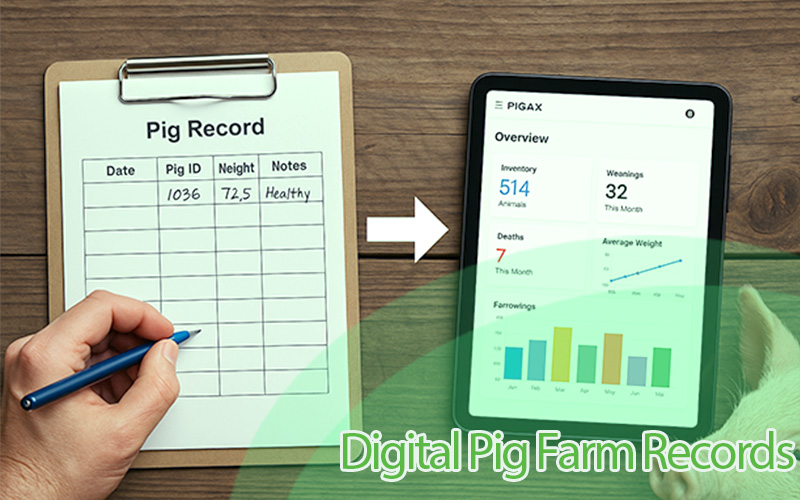Secret to Managing Large Pig Farms
Managing a large pig farm involves more than just feeding pigs and maintaining facilities; it requires a holistic approach to handle large-scale operations efficiently. Factors such as climate, culture, and economic conditions heavily influence pig farming practices in different regions. Moreover, the increasing demand for pork products and the evolving consumer preferences present exciting opportunities for farmers to expand their operations.
However, managing large pig farms comes with its fair share of challenges and opportunities.
This post dives deep into these essential elements, revealing the key strategies every large pig farm manager should know.
Understanding the Structure of Large Pig Farms
Before diving into the management of a large pig farm, it's critical to undertake detailed feasibility studies. These evaluations cover various aspects, such as market demand, availability of resources, and identifying potential risks. Choosing an appropriate location and the right facilities is also fundamental, with considerations like the proximity to feed sources and access to transportation networks being key factors in optimizing farm operations. Additionally, establishing a detailed budget and investigating financing avenues are important steps to ensure the project proceeds smoothly.
Designing an efficient layout and infrastructure for the pig farm is crucial to facilitate daily operations and enhance animal welfare. Prioritizing biosecurity measures is essential to protect the pigs from diseases and maintain a healthy population. Moreover, incorporating sustainable and environmentally friendly practices not only helps the environment but also boosts the farm’s long-term financial success.
Large Pig Farm Management Tips
The following tips can help in managing pig farms that are large in operation. Not one of these tips is more important than the other. Give propeer consideration to all of it.
I. Infrastructure Planning & Design
The foundation of successful large-scale pig farming starts with proper planning and design. A well-thought-out farm layout can significantly enhance efficiency, minimizing the time and effort required for daily tasks like feeding, cleaning, and monitoring livestock. Organizing your farm into functional zones—such as breeding areas, feeding zones, and waste disposal systems—ensures smooth workflows and reduces bottlenecks that slow down operations.
Well-designed pig housing is vital for both animal welfare and biosecurity. Good ventilation, sufficient space, and sanitary conditions not only keep pigs comfortable but also help prevent disease outbreaks. Implementing strong biosecurity measures like controlled access points, disinfectant stations, and proper waste disposal further protect the herd from external threats, ensuring the health of your pigs is never compromised.
II. Technology & Automation
The integration of cutting-edge technologies, such as Automated data collection and analytics offers valuable insights into herd performance and health, enabling data-driven decision-making. Smart monitoring and control systems provide real-time oversight, allowing farmers to remotely manage critical aspects of the farm. Pig management software like pigax can be used to manage all farm operations effectively.
Data analytics provide insights that allow managers to make informed decisions quickly, whether it’s adjusting feeding regimens, identifying sick animals, or optimizing production schedules.
III. Health & Welfare Management
In large pig populations, disease outbreaks can be catastrophic, making preventive healthcare a top priority. Regular vaccinations, biosecurity protocols, and continuous health monitoring help mitigate these risks. Technology plays a crucial role here too—sensors can detect early signs of illness, enabling farm managers to intervene before diseases spread throughout the herd.
The key to healthy pigs is proper nutrition. A well-planned diet tailored to the pigs’ specific growth stages helps ensure strong development and weight gain while reducing the risk of disease. Balancing protein, fats, vitamins, and minerals in the feed ensures the pigs grow healthy and strong, which in turn leads to more productive outcomes.
IV. Workforce & Labor Management
Skilled labor is another vital component of managing large pig farms. Workers should be trained not only in traditional pig farming techniques but also in modern technological systems. Training programs that emphasize animal welfare, safety, and technology usage ensure that workers are well-equipped to handle the daily demands of large-scale farming.
Delegating tasks efficiently among farm staff ensures that all operations are running smoothly. It’s essential to assign roles based on skill sets, whether it's monitoring animal health, managing feed systems, or handling biosecurity protocols. This organized approach reduces downtime and labor costs while boosting productivity and ensuring that the farm operates smoothly.
V. Sustainability & Environmental Management
One of the biggest challenges for large pig farms is managing waste in an environmentally friendly way. Implementing effective waste management systems like anaerobic digesters or biogas systems can help farms convert waste into energy, reducing their environmental footprint. These technologies also help mitigate the environmental impact of large farms by minimizing greenhouse gas emissions.
Conserving water and energy is another key secret to sustainable large-scale pig farming. Smart irrigation systems and rainwater collection methods can drastically reduce water usage. Solar panels and other renewable energy sources can help offset electricity costs while reducing the farm’s reliance on fossil fuels, creating a more sustainable operation over the long term.
VI. Financial Management & Cost Optimization
Efficient financial management is critical to keeping large pig farms profitable. This starts with creating detailed budgets that account for feed, labor, equipment, maintenance, and unexpected expenses. Monitoring costs and regularly reviewing budgets ensures that spending remains under control without compromising the farm's output.
Investments in technology, infrastructure, and herd management can have significant long-term returns if chosen wisely. For example, investing in automated systems may have high upfront costs but can save money on labor and boost efficiency over time. A strategic approach to investments ensures that resources are allocated to areas that maximize returns, driving profitability in the long run.
Conclusion
Managing large pig farms successfully is no small feat, but by following the key strategies outlined above, farm managers can optimize efficiency, reduce costs, and enhance productivity. From smart infrastructure planning and automation to focusing on animal welfare and sustainability, these secrets provide a comprehensive guide to thriving in the competitive world of large-scale pig farming. By staying informed, innovative, and efficient, the future of pig farming can be both profitable and sustainable.




